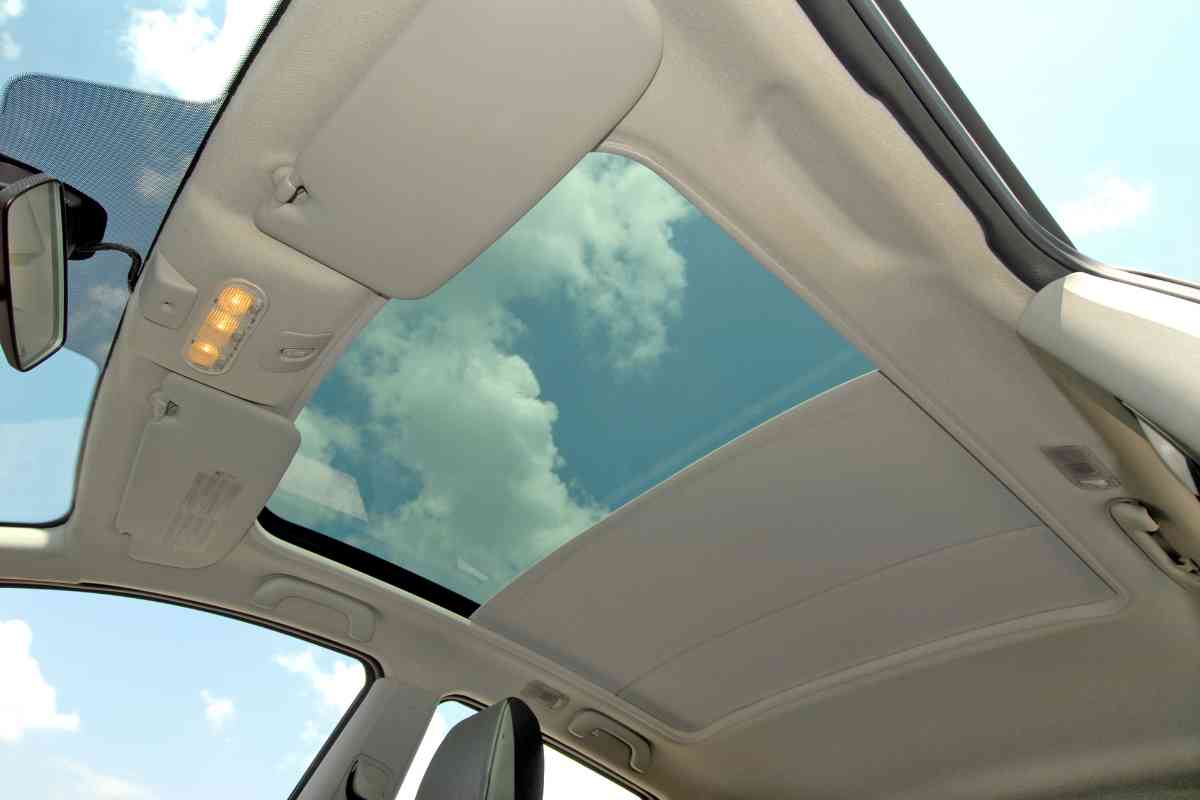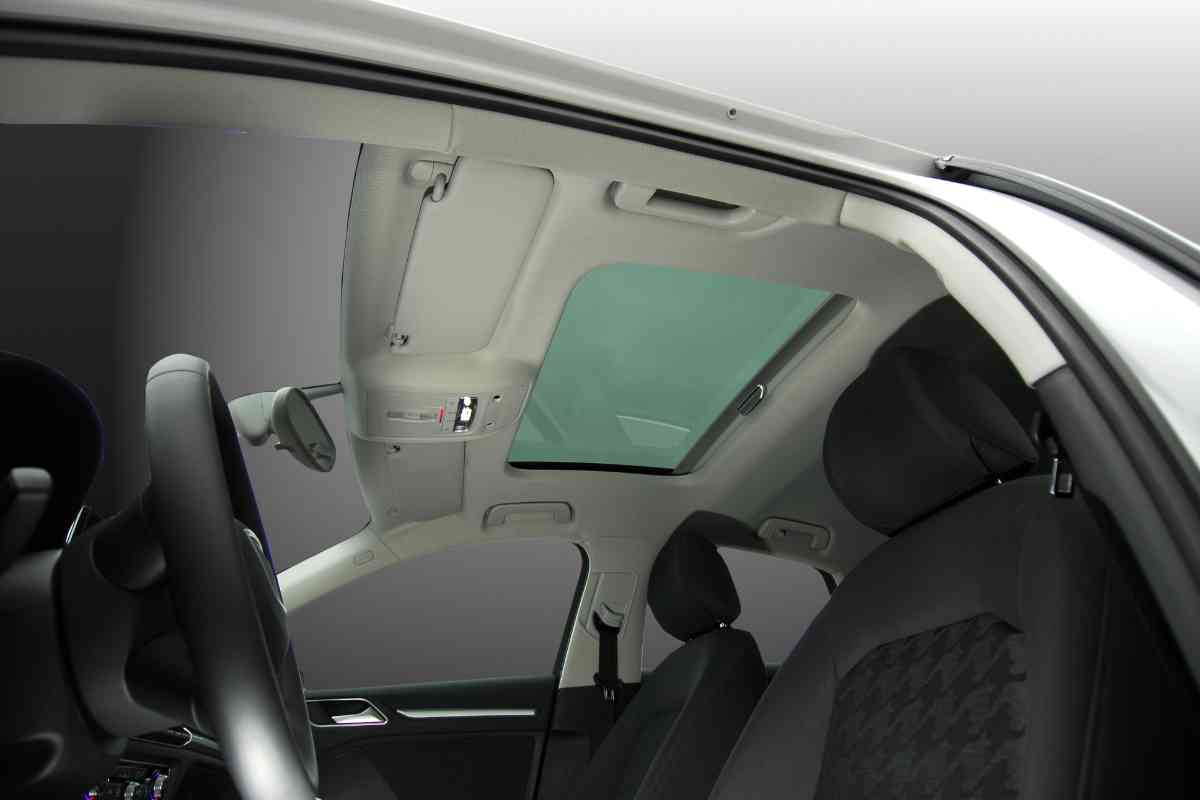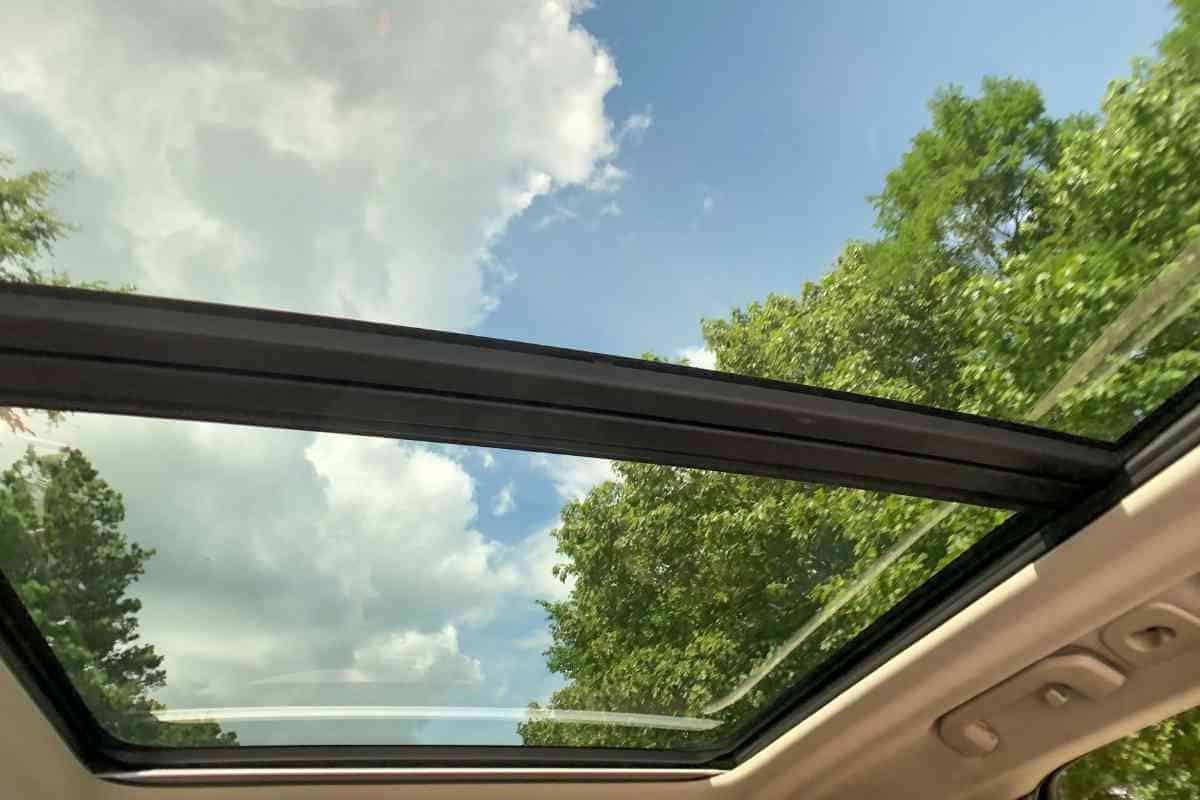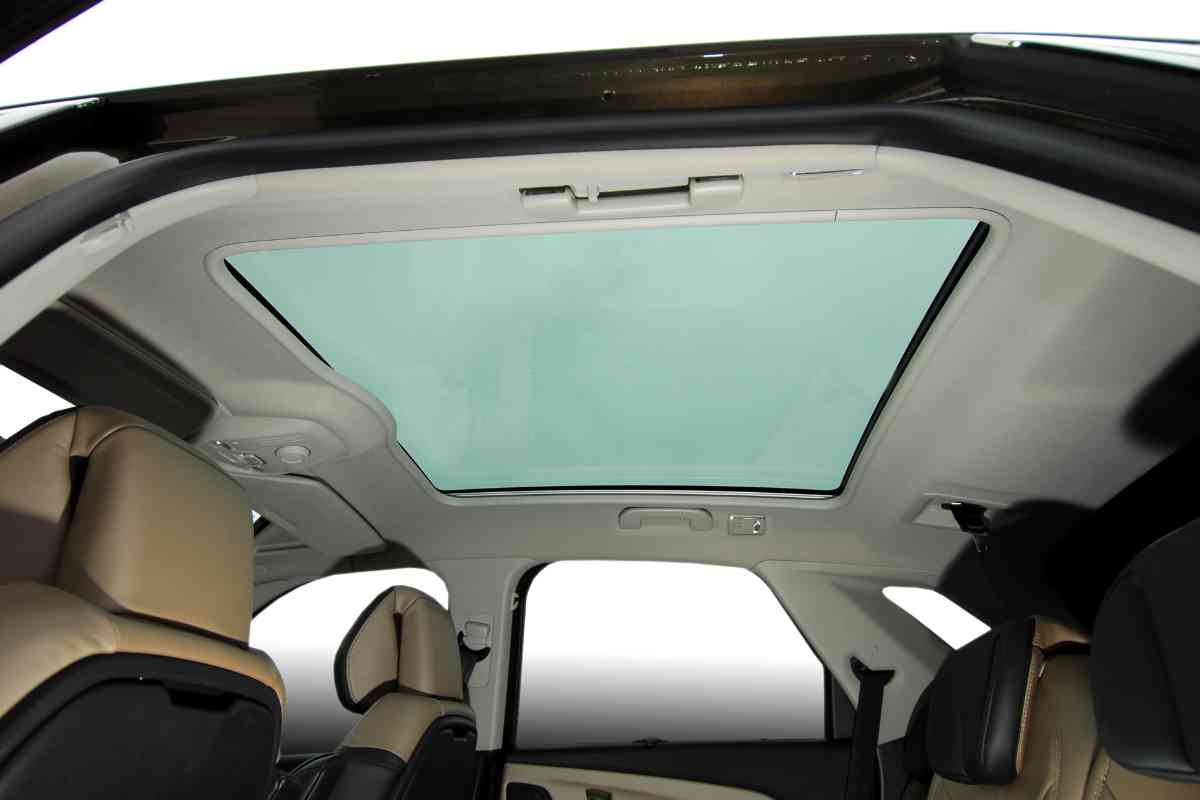How Much Headroom Do You Lose with a Sunroof? Explained.
A sunroof is a highly sought-after feature in many modern vehicles, providing a sense of openness and allowing natural light to flood the cabin. This addition can significantly enhance the driving experience. However, for some potential car buyers, the concern about how much headroom might be lost due to a sunroof is quite valid.

Related Post! Does A Sunroof Increase Drag?
How Much Headroom Do You Lose With A Sunroof?
A sunroof typically reduces headroom by 1-2 inches for standard models, and up to 4 inches for larger panoramic or aftermarket sunroofs. The exact amount varies based on the vehicle and sunroof type. Taller drivers may notice this reduction more, so it’s advisable to test drive vehicles with sunroofs before purchasing.
While sunroofs add appeal and functionality, they do have some drawbacks. A notable one is the reduction in headroom when a sunroof is installed. The amount of headroom lost can vary based on the car’s make and model, as well as the size and type of sunroof installed.
For taller individuals or those who simply need more headroom, this reduction can be a crucial factor. Therefore, understanding the extent of headroom loss associated with a sunroof is essential before making a purchase. This article delves into this topic to provide you with the necessary information to make an informed decision about buying a car with a sunroof.
What is a Sunroof?
A sunroof is an opening in the roof of a vehicle that allows natural light and fresh air to enter the cabin. Made of either glass or metal, sunroofs can be opened or closed using a switch or a manual lever. They are popular in cars, trucks, and SUVs and come in various styles, including pop-up, tilt, and sliding.
Initially, sunroofs were designed to provide natural light and ventilation. Over time, they have evolved into a luxury feature, enhancing the aesthetic appeal of vehicles. They offer the unique experience of enjoying sunshine and fresh air while driving.
From an aerodynamic perspective, sunroofs can create additional drag, potentially increasing fuel consumption and slightly reducing overall performance. However, in everyday driving conditions, this impact is typically minimal and not noticeable.

Types of Sunroofs
There are several types of sunroofs available, each with unique features and benefits. Here are the three most common types:
Pop-up Sunroofs
Also known as tilt-up or vent sunroofs, pop-up sunroofs are the most basic type and are usually found on older vehicles. They are manually operated, featuring a hinged panel that can be tilted up to allow fresh air inside. Pop-up sunroofs are typically smaller and do not significantly impact headroom when closed.
Spoiler Sunroofs
Known as tilt-and-slide sunroofs, spoiler sunroofs combine the tilt feature of pop-up sunroofs with a sliding mechanism that allows the glass panel to move back and forth. Spoiler sunroofs are usually larger and take up more headroom when closed. They are often seen on sportier vehicles, providing a more aerodynamic look.
Inbuilt Sunroofs
Often referred to as moonroofs or panoramic sunroofs, inbuilt sunroofs are the most advanced type, commonly found on newer vehicles. These electrically operated sunroofs consist of a large glass panel that slides back and forth over the roof. Inbuilt sunroofs provide the most headroom when closed and can open up to offer a panoramic view of the sky. They are typically more expensive but add a luxurious feel to the vehicle.
Lost headroom With Sunroofs

One of the most common concerns among car buyers considering a sunroof is the potential loss of headroom. The exact amount of headroom lost depends on several factors, including the type of sunroof, the size of the vehicle, and the height of the driver.
Generally, a sunroof reduces headroom by a few inches. A standard factory-installed sunroof typically reduces headroom by 1-2 inches. In contrast, a panoramic sunroof or a larger aftermarket sunroof may reduce headroom by up to 4 inches.
It’s important to note that this reduction in headroom may not be noticeable for drivers of average height or shorter. However, taller drivers might find the reduced headroom uncomfortable or even unbearable.
For those concerned about headroom, it’s recommended to test drive a vehicle with a sunroof to determine if the reduced headroom is acceptable. Additionally, some automakers offer options like power-adjustable seats and steering columns, which can help drivers find a comfortable driving position even with a sunroof.
Related Post! Pros And Cons Of Sunroofs
Factors Affecting Headroom Loss
Several factors influence the amount of headroom lost with a sunroof:
Type of Sunroof
The type of sunroof significantly impacts headroom loss. A panoramic sunroof, due to its larger size, typically takes up more headroom than a standard sunroof. Similarly, a tilt-and-slide sunroof may cause more headroom loss than a pop-up sunroof.
Vehicle Type
The type of vehicle also affects headroom loss. Taller SUVs or crossovers generally have more headroom to begin with, so even with a sunroof, you may still have plenty of space. However, smaller sedans or coupes might have less initial headroom, making the addition of a sunroof more noticeable.
Trim Level
The trim level of the vehicle can impact headroom loss as well. Higher trim levels often come with more features, including sunroofs, which may reduce headroom. Conversely, lower trim levels might have less headroom initially but may also lack the option for a sunroof.
Seating Position
Your seating position affects how much headroom you lose with a sunroof. Taller drivers sitting in the front seat may notice more headroom loss than shorter individuals or those seated in the back. Additionally, if you tend to slouch or sit with your head closer to the roof, you might experience more noticeable headroom loss.
How to Fix Headroom Loss with a Sunroof
If you’ve already purchased a car with a sunroof and are experiencing headroom loss, several solutions can help mitigate the issue:

Adjust the Seat Position
One of the simplest solutions is to adjust the seat position. Lowering the seat can help compensate for the headroom lost due to the sunroof. However, this might not be a viable option for taller drivers who already have their seat adjusted to the lowest position.
Install a Thinner Sunroof
Consider replacing the existing sunroof with a thinner one if headroom is a major concern. This can help reduce the amount of headroom lost and is a good option for those who don’t use the sunroof often.
Install a Pop-up Sunroof
Another option is to replace the existing sunroof with a pop-up sunroof. This type of sunroof is designed to be flush with the roof when closed, thereby not taking up any headroom. When opened, it pops up and provides the same benefits as a traditional sunroof.
Remove the Sunroof
If none of the above options work, the last resort is to remove the sunroof altogether. This will provide maximum headroom but will also eliminate the benefits of having a sunroof.
Related Post! Are Sunroofs Safe?
Other Considerations When Choosing a Sunroof
Wind Noise
One common complaint about sunroofs is wind noise. While most sunroofs are designed to minimize noise, some models may still allow significant wind noise into the cabin, especially at high speeds or in windy conditions. Buyers should consider the type of sunroof and its design to ensure it provides adequate noise reduction.
Rain and Leaks
Another consideration is the potential for rain and leaks. Modern sunroofs are typically designed to be water-tight, but heavy rain or improper installation can lead to leaks. Buyers should ensure their sunroof is properly installed and maintained to prevent this issue. Some sunroofs come with a built-in rain sensor that automatically closes the sunroof if it detects rain.
Weight and Center of Gravity
Adding a sunroof can increase a vehicle’s weight and alter its center of gravity, affecting handling and performance, particularly in high-performance vehicles. Buyers should consider these factors to ensure the sunroof does not negatively impact the vehicle’s performance.
Power and Motor
Sunroofs can be either manually operated or powered by an electric motor. Powered sunroofs are generally easier to operate but can be more expensive and require more maintenance. Buyers should weigh the convenience of a powered sunroof against its cost and maintenance needs.
Packages and Additional Features
Some automakers offer sunroofs as part of a package, such as the SHO Package or Premium Package, which may include upgraded rims, premium audio systems, or performance enhancements. Buyers should consider these packages, as they may provide additional value and features at a lower cost than purchasing each feature separately.

Conclusion
After thorough investigation, it’s clear that the amount of headroom lost with a sunroof varies depending on the vehicle and the size of the sunroof. Generally, the larger the sunroof, the more headroom is lost. However, the difference is often negligible and may not be noticeable to most drivers.
While a sunroof may cause a slight decrease in headroom, it offers numerous benefits, such as increased ventilation and natural light. Many drivers also find the aesthetic appeal of a sunroof desirable.
Ultimately, the decision to purchase a vehicle with a sunroof should be based on personal preference and driving needs. If headroom is a major concern, test driving a vehicle with a sunroof can help determine if the amount of headroom lost is acceptable.
